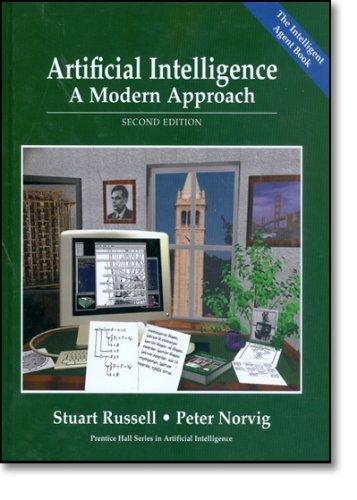(Adapted from an example by Doug Lenat.) Your mission is to capture, in logical form, enough knowledge...
Question:
(Adapted from an example by Doug Lenat.) Your mission is to capture, in logical form, enough knowledge to answer a series of questions about the following simple sentence:
Yesterday John went to the North Berkeley Safeway supermarket and bought two pounds of tomatoes and a pound of ground beef.
Start by trying to represent the content of the sentence as a series of assertions. You should write sentences that have straightforward logical structure (e.g., statements that objects have certain properties, that objects are related in certain ways, that all objects satisfying one property satisfy another). The following might help you get started:
Which classes, objects, and relations would you need? What are their parents, siblings and so on? (You will need events and temporal ordering, among other things.)
Where would they fit in a more general hierarchy?
What are the constraints and interrelationships among them?
How detailed must you be about each of the various concepts?
The knowledge base you construct must be capable of answering a list of questions that we will give shortly. Some of the questions deal with the material stated explicitly in the story, but most of them require one to have other background knowledge-to read between the lines. You'll have to deal with what kind of things are at a supermarket, what is involved with purchasing the things one selects, what will purchases be used for, and so on. Tly to make your representation as general as possible. To give a trivial example: don't say "People buy food from Safeway," because that won't help you with those who shop at another supermarket.
Don't say "Joe made spaghetti with the tomatoes and ground beef," because that won't help you with anything else at all. Also, don't turn the questions into answers; for example, question
(c) asks "Did John buy any meat?'-not "Did John buy a pound of ground beef?"
Sketch the chains of reasoning that would answer the questions. In the process of doing so, you will no doubt need to create additional concepts, make additional assertions, and so on. If possible, use a logical reasoning system to demonstrate the sufficiency of your knowledge base. Many of the things you write might be only approximately correcrl. in reality, but don't worry too much; the idea is to extract the common sense that lets you answer these questions at all. A truly complete answer to this question is extremely difficult, probably beyond the state of the art of current knowledge representation. But you should be able to put together a consistent set of axioms for the limited questions posed here.
a. Is John a child or an adult? [Adult]
b. Does John now ha~a~t ele ast two tomatoes? [Yes]
c. Did John buy any meat? [Yes]
d. If Mary was buying tomatoes at the same time as John, did he see her? [Yes]
e. Are the tomatoes made in the supermarket? [No]
f. What is John going to do with the tomatoes? [Eat them]
g. Does Safeway sell deodorant? [Yes]
h. Did John bring any money to the supermarket? [Yes]
i. Does John have less money after going to the supermarket? [Yes]
Step by Step Answer:

Artificial Intelligence: A Modern Approach
ISBN: 9780137903955
2nd Edition
Authors: Stuart Russell, Peter Norvig





